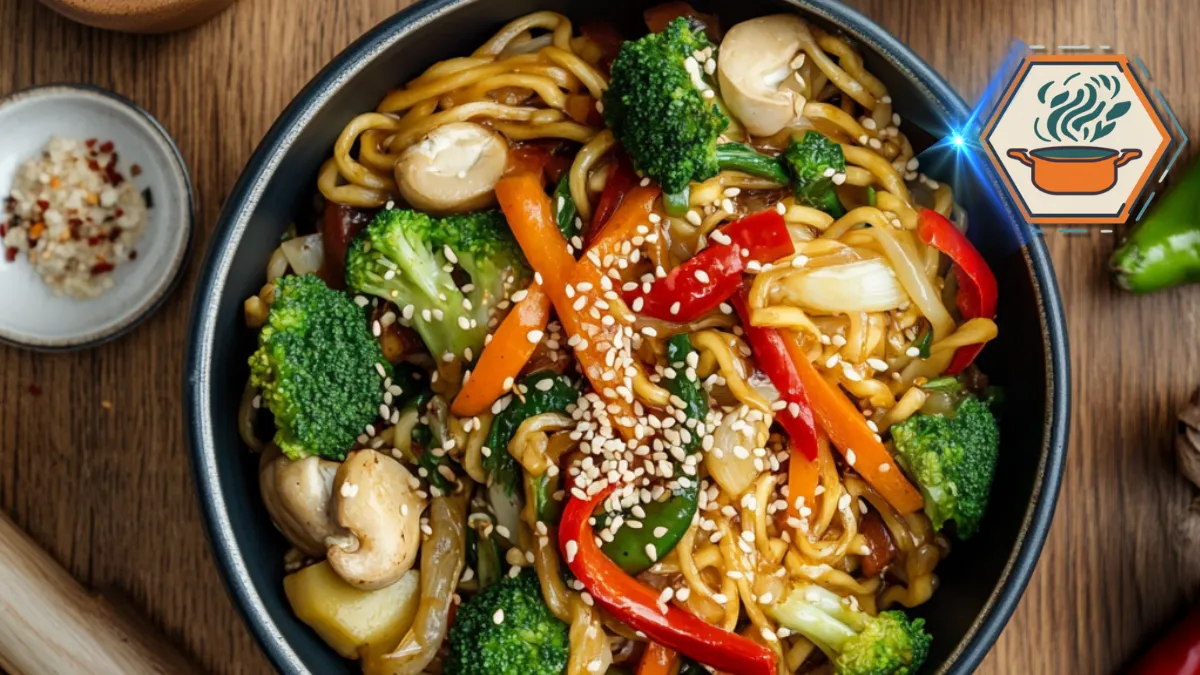Time to read:11 minutes
Jump To
Table of Contents
Introduction to Stir Fry Seasoning
Stir Fry Seasoning is the secret to creating flavorful and aromatic dishes. This blend of spices and sauces elevates simple ingredients into a delicious meal. Whether you are preparing a quick dinner or experimenting with new recipes, having the right seasoning is essential for success. In this guide, we’ll uncover the basics, explain why stir fry needs a special touch, and explore the benefits of making your seasoning at home.
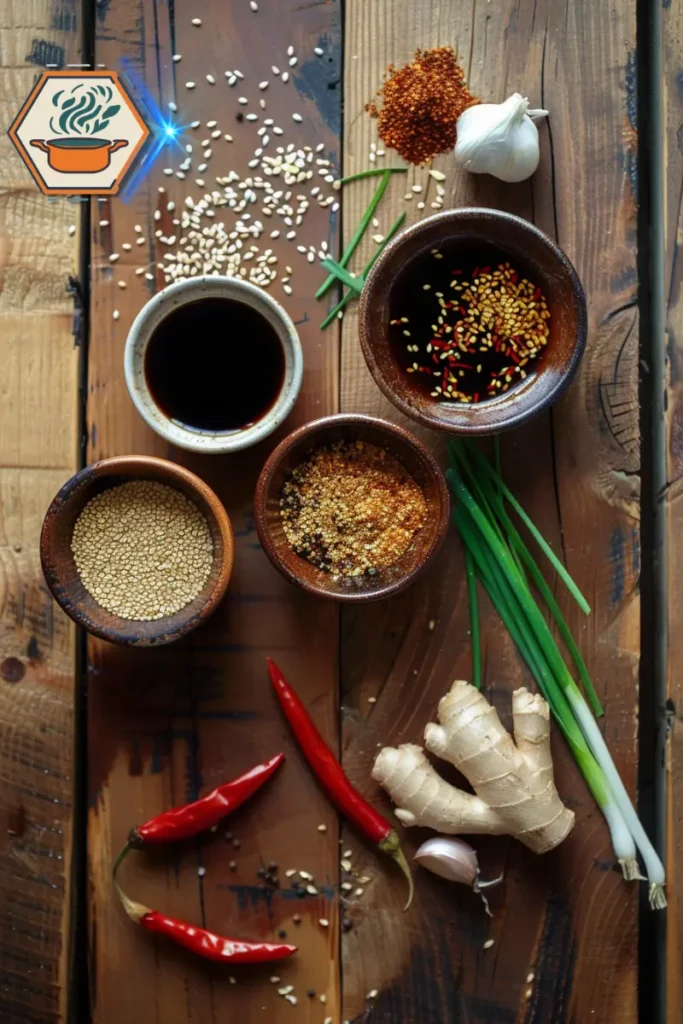
The Basics of Stir Fry Seasoning
A good stir fry seasoning combines salty, sweet, and umami flavors. Traditional blends often include:
- Soy sauce: Adds saltiness and depth.
- Garlic and ginger: Provide an aromatic base.
- Sugar or honey: Balances the savory flavors.
- Sesame oil: Adds richness and nuttiness.
The balance of these ingredients creates a harmonious flavor profile. Some recipes may also include chili flakes for heat or vinegar for a tangy kick. Each component serves a purpose, ensuring your stir fry is flavorful and satisfying.
For example, using fresh ginger instead of powdered gives a brighter, more intense flavor. Similarly, low-sodium soy sauce allows better control of the salt level in your dish.
Learn more about how to make homemade puree to pair with your stir fry for a complete meal.
Why Stir Fry Needs a Unique Blend

Stir fry is a quick-cooking method. This means flavors need to be intense and well-balanced from the start. The stir fry seasoning must:
- Coat ingredients evenly.
- Develop quickly in high heat.
- Complement a wide range of vegetables and proteins.
Unlike other cooking techniques, stir fry relies on high heat to caramelize ingredients. The seasoning ensures the flavors shine, even in a short cooking time. It also helps vegetables retain their crisp texture while absorbing the sauce.
For example, adding sesame oil at the end keeps its aroma intact. A splash of rice vinegar can brighten the dish without overpowering it.
For an in-depth exploration of soy sauce varieties and their flavor profiles, consider reading Serious Eats’ comprehensive guide on soy sauce. Serious Eats This resource delves into the nuances of different types of soy sauce, their unique characteristics, and culinary applications, providing valuable insights for enhancing your cooking.
Benefits of Homemade Seasoning Over Store-Bought
Making stir fry seasoning at home has several advantages:
- Control Over Ingredients: You can adjust sweetness, spice, or salt to match your taste preferences.
- Freshness: Homemade blends are free from preservatives, ensuring a fresher flavor.
- Healthier Options: Store-bought sauces often contain added sugar or artificial ingredients. Homemade versions let you use natural alternatives.
- Cost-Effective: Creating your blend can save money, especially if you cook stir fry often.
Customizing your seasoning also lets you experiment. Adding a dash of fish sauce or a sprinkle of five-spice powder can create unique flavor combinations. Plus, you can make a large batch and store it for convenience.
When you make your own, you’re not just enhancing the taste; you’re making the dish healthier and more personal. It’s a small effort with big rewards for your meals.
Additional Tips
- Use fresh ingredients like minced garlic and ginger for a better aroma.
- Avoid over-saucing the stir fry; aim for a light coating.
- Continuously taste and adjust the seasoning throughout the cooking process for the best flavor.
This foundational knowledge will prepare you for creating exceptional stir fry dishes at home.
Key Ingredients for Stir Fry Seasoning

Stir fry seasoning is a blend of essential spices and sauces that elevates the flavor of your dishes. Whether you’re making a classic vegetable stir fry or adding a protein like chicken or tofu, getting the right seasoning is key. This guide breaks down the common ingredients, how to balance flavors, and healthy substitutes for your stir fry seasoning.
Common Ingredients in Stir Fry Seasonings
| Ingredient | Flavor Contribution | Substitution Options | Usage Tip |
|---|---|---|---|
| Soy Sauce | Salty, umami depth | Tamari (for gluten-free) | Use low-sodium soy sauce to control salt |
| Garlic (Fresh/Powder) | Aromatic, savory | Garlic paste or shallots | Add fresh garlic for a stronger aroma |
| Ginger (Fresh/Powder) | Warm, slightly spicy | Galangal or ground ginger | Grate fresh ginger for bolder flavor |
| Sesame Oil | Nutty, rich | Toasted sesame seeds | Add at the end to retain aroma |
| Sugar/Honey | Sweet balance | Maple syrup, agave syrup | Adjust sweetness based on soy sauce |
| Cornstarch | Thickens sauces | Arrowroot powder | Mix with cold water to prevent lumps |
| Chili Flakes | Heat and spice | Fresh chili, sriracha | Adjust quantity for desired heat level |
A great stir fry seasoning typically contains a mix of savory, sweet, and spicy elements. Here are the most commonly used ingredients:
- Soy Sauce: The base of most stir fry sauces. It adds a deep, salty umami flavor. Low-sodium versions can help control salt levels.
- Garlic Powder: Adds an aromatic quality that complements other spices. Fresh garlic can also be used for a more intense flavor.
- Sesame Oil: Used sparingly, this oil gives a rich, nutty undertone. Toasted sesame oil is the best choice for stir fry dishes.
- Ginger: Often used in grated or powdered form, ginger adds a warm, slightly spicy taste.
- Sugar or Honey: These sweeteners balance the saltiness of the soy sauce and enhance the overall flavor. Brown sugar is a popular choice.
- Cornstarch: Helps thicken the sauce and ensures it coats the ingredients evenly.
👉 Check out our guide on how to caramelize sugar for sauces.
Balancing Sweet, Savory, and Spicy Flavors
| Flavor Profile | Primary Ingredients | Adjustment Tips |
|---|
| Savory/Umami | Soy sauce, oyster sauce, garlic | Reduce soy sauce if too salty; add mushrooms for more umami |
| Sweet | Sugar, honey, brown sugar | Add more sugar/honey if too salty; balance with vinegar |
| Spicy | Chili flakes, sriracha, fresh chilies | Start with a small amount; increase slowly to taste |
| Tangy | Rice vinegar, lime juice | Add gradually; too much can overpower other flavors |
| Nutty | Sesame oil, toasted sesame seeds | Add sesame oil at the end for full aroma |
Creating a perfectly balanced stir fry seasoning requires careful attention to proportions:
- Savory: Soy sauce and garlic powder are the main contributors to the savory profile. Adjust soy sauce amounts to avoid overpowering other flavors.
- Sweet: Use sugar, honey, or maple syrup to provide a subtle sweetness. This element complements the saltiness.
- Spicy: Add chili flakes, sriracha, or fresh chili peppers for heat. Start small and increase gradually to match your taste.
Tips for Balancing Flavors
- Taste as you go. Adjust the ratios until the flavors blend harmoniously.
- Use fresh ingredients like minced garlic or ginger for more vibrant flavors.
- Include a splash of rice vinegar or lime juice to brighten the seasoning and add acidity.
Healthier Substitutes for Stir Fry Spices
For those looking to make healthier choices, here are some alternatives to common stir fry seasoning ingredients:
- Soy Sauce Substitute: Coconut aminos are a gluten-free, lower-sodium alternative to soy sauce.
- Sweeteners: Replace sugar with natural options like honey, agave syrup, or stevia.
- Oils: Use avocado oil or olive oil as healthier options than sesame oil.
- Low-Sodium Seasoning Blends: Look for pre-made spice blends labeled as low-sodium.
These adjustments maintain the flavor without compromising your dietary preferences.
How to Make Stir Fry Seasoning at Home
Creating your own stir fry seasoning at home is simple, budget-friendly, and allows for complete control over the flavor. Whether you prefer spicy, sweet, or savory dishes, mastering the art of seasoning can elevate your stir fry to restaurant-quality standards. Let’s dive into the essentials for making your seasoning blend.
Quick and Easy Homemade Recipes
Making stir fry seasoning doesn’t require a lot of fancy ingredients. Most components can be found in your pantry or local grocery store. Here’s a basic recipe to get started:
Ingredients:
- Soy sauce (2 tablespoons) – Adds a rich umami flavor.
- Oyster sauce (1 tablespoon) – Enhances sweetness and depth.
- Cornstarch (1 teaspoon) – Helps thicken the sauce for a glossy finish.
- Sugar (1 teaspoon) – Balances savory elements with a touch of sweetness.
- Ginger (freshly grated, 1 teaspoon) – Infuses freshness and warmth.
- Garlic (minced, 2 cloves) – Adds bold flavor.
- Sesame oil (1 teaspoon) – Brings nutty richness.
- Red pepper flakes (optional, ½ teaspoon) – For a spicy kick.
Instructions:
- Combine all the ingredients in a small bowl.
- Whisk thoroughly until the sugar dissolves and the cornstarch is smooth.
- Set aside until ready to use in your stir fry dish.
Tip: Adjust the saltiness by using low-sodium soy sauce. For a more robust taste, add a splash of rice vinegar or a pinch of white pepper.
Check out our perfect meatloaf guide for another delicious recipe where seasoning is key.
For detailed information about soy sauce varieties, consider exploring Britannica’s article on soy sauce. This resource provides comprehensive insights into the different types of soy sauce, their origins, and uses in various cuisines.
🔥 10 Must-Try Stir Fry Seasoning Recipes for Perfect Flavors

Ready to upgrade your stir fry game? Here are 10 irresistible stir fry seasoning recipes you can try today. Each one is tailored for different flavor profiles—savory, spicy, tangy, sweet, or umami-rich. They’re quick to make and packed with bold taste.
1. Classic Garlic Ginger Soy Blend
Perfect for: Chicken or veggie stir fry
Ingredients:
- 2 tbsp soy sauce
- 1 tbsp oyster sauce
- 1 tsp brown sugar
- 1 tsp fresh grated ginger
- 2 cloves minced garlic
- 1 tsp cornstarch
- 1 tsp sesame oil
Instructions:
Whisk all ingredients together and add during the last 2 minutes of stir frying.
2. Sweet & Spicy Honey Chili Mix
Perfect for: Tofu or shrimp
Ingredients:
- 2 tbsp low-sodium soy sauce
- 1 tbsp honey
- ½ tsp chili flakes or sriracha
- 1 tsp rice vinegar
- 1 tsp garlic powder
- 1 tsp cornstarch
Tip: Add extra honey for more sweetness or a dash of lime juice for balance.
3. Thai-Inspired Lime Fish Sauce Blend
Perfect for: Beef or seafood
Ingredients:
- 1 tbsp fish sauce
- 1 tbsp lime juice
- 1 tbsp brown sugar
- 1 tsp minced garlic
- 1 tsp chili flakes
Note: This one’s bold and funky—don’t skip the lime!
4. Low-Sodium Coconut Amino Stir Fry
Perfect for: Paleo or Whole30 diets
Ingredients:
- 2 tbsp coconut aminos
- 1 tsp grated ginger
- 1 tsp honey or date syrup
- 1 tsp arrowroot powder (as a thickener)
- 1 tsp toasted sesame oil
Why it works: Full umami without soy or gluten.
5. Korean Gochujang BBQ Seasoning
Perfect for: Grilled beef, mushrooms, or pork
Ingredients:
- 1 tbsp gochujang (Korean chili paste)
- 1 tbsp soy sauce
- 1 tbsp mirin or rice wine
- 1 tsp garlic
- 1 tsp sesame oil
Pro Tip: This also works well as a marinade—let it sit for 30 minutes.

6. Citrus Miso Sesame Sauce
Perfect for: Tofu, chicken, or salmon
Ingredients:
- 1 tbsp white miso paste
- 1 tbsp orange or lemon juice
- 1 tsp maple syrup
- ½ tsp soy sauce
- 1 tsp toasted sesame seeds
Flavor profile: Fresh, tangy, and earthy with a creamy twist.
7. Teriyaki-Style Sweet Garlic Sauce
Perfect for: Chicken and rice bowls
Ingredients:
- 2 tbsp soy sauce
- 1 tbsp brown sugar
- 1 tbsp mirin
- 1 tsp minced garlic
- ½ tsp ginger
- 1 tsp cornstarch
Bonus: Simmer for 3-4 minutes before adding to stir fry for a thicker glaze.
8. Spicy Szechuan Pepper Stir Fry Mix
Perfect for: Eggplant, beef, or noodles
Ingredients:
- 1 tbsp soy sauce
- 1 tbsp chili oil
- 1 tsp Szechuan peppercorns (crushed)
- 1 tsp garlic
- 1 tsp rice vinegar
Note: Szechuan pepper adds a unique numbing heat.
9. Vegan Mushroom Umami Blend
Perfect for: Tofu, zucchini, and tempeh
Ingredients:
- 2 tbsp mushroom broth or powder
- 1 tbsp soy sauce
- 1 tsp maple syrup
- 1 tsp garlic powder
- ½ tsp liquid smoke (optional)
Why it rocks: Deep savory flavor with no animal products.
10. Tamarind Sesame Tangy Sauce
Perfect for: Noodles, rice dishes, or vegetable medleys
Ingredients:
- 1 tbsp tamarind paste
- 1 tbsp soy sauce
- 1 tsp honey
- 1 tsp sesame oil
- ½ tsp grated ginger
Result: A bright, bold, and tangy twist on classic stir fry flavor.
🧂 How to Use These Seasonings
- Use 2-3 tablespoons per stir fry dish (serving 2-4 people).
- Mix into the pan during the last 2–3 minutes of cooking.
- Double the recipe and store in an airtight container for up to 1 week in the fridge.
👉 Try pairing your stir fry with these perfect rice chicken casserole recipes.
Step-by-Step Guide to Mixing Ingredients
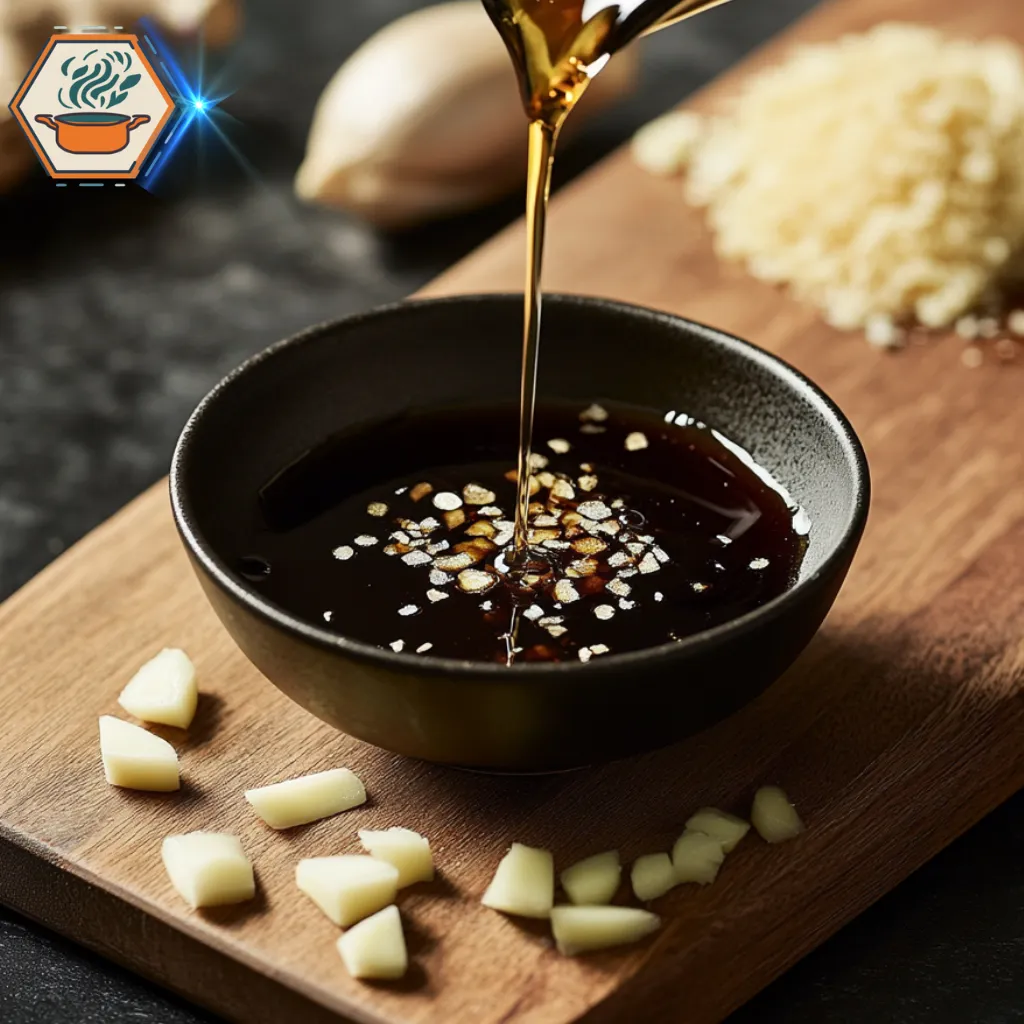
To achieve the perfect balance in your stir fry seasoning, precision is essential. Here’s a step-by-step guide:
Step 1: Gather Your Tools
You will need:
- A small mixing bowl
- Measuring spoons
- A whisk or fork
Step 2: Add Base Ingredients
Start with liquid components such as soy sauce and oyster sauce. These provide the foundation for the seasoning.
Step 3: Incorporate Aromatics
Mix in grated ginger and minced garlic. These ingredients enhance the fragrance and taste of the seasoning.
Step 4: Balance Sweetness and Savory
Add sugar and optional red pepper flakes. Taste and adjust according to your preference.
Step 5: Achieve the Right Consistency
Finally, whisk in cornstarch. This will help thicken the sauce when cooked. Ensure the mixture is lump-free for smooth incorporation.
Salty Elements: Building the Foundation
Saltiness forms the backbone of most stir fry dishes. It enhances the natural flavors of the other ingredients and brings depth to the overall dish.
- Primary Sources:
- Soy Sauce: A staple in stir fry seasoning, soy sauce provides both saltiness and umami. Use 1 to 2 tablespoons for every serving and adjust as needed.
- Oyster Sauce: Thicker and sweeter than soy sauce, oyster sauce adds richness. Use 1 tablespoon for added depth.
- Salt or Sea Salt: A pinch can enhance flavors without overshadowing them. Use sparingly when soy sauce is already included.
- Balancing Tip:
Start with a smaller amount of soy sauce and gradually add more after tasting. This method prevents the dish from becoming overly salty. - Alternative Options:
- Tamari: A gluten-free alternative to soy sauce, offering a similarly rich flavor.
- Coconut Aminos: A lower-sodium, slightly sweeter alternative that still delivers saltiness and umami.
Sweet Touches: Balancing Bold Flavors
Sweetness in stir fry seasoning helps to balance the saltiness and adds a subtle contrast that elevates the dish’s complexity.
- Primary Sources:
- Brown Sugar: Provides a mild caramelized sweetness. Use 1 to 2 teaspoons to start.
- Honey or Maple Syrup: Natural sweeteners that add smooth sweetness. Start with 1 teaspoon and adjust to taste.
- Hoisin Sauce: Adds a sweet, tangy flavor with a hint of spice. Use 1 tablespoon for a more complex sweetness.
- Balancing Tip:
Add sweeteners gradually to avoid making the seasoning too sugary. Remember, the goal is to balance, not dominate. - Alternative Options:
- Agave Syrup: A vegan alternative with a neutral, light sweetness.
- Date Syrup: For a richer, more natural sweetness.
Sour Notes: Enhancing Freshness
Sour ingredients cut through the richness of the seasoning and brighten the overall flavor, making the dish taste fresher and lighter.
- Primary Sources:
- Rice Vinegar: A mild, slightly sweet vinegar perfect for stir fry. Use 1 to 2 teaspoons.
- Lime or Lemon Juice: Provides a sharp, citrusy brightness. Add 1 teaspoon at a time.
- Balsamic Vinegar: For a deeper, slightly sweet acidity. Use sparingly—about ½ teaspoon.
- Balancing Tip:
Always add sour components in small increments and taste after each addition. Too much acidity can overpower the other flavors. - Alternative Options:
- Apple Cider Vinegar: A more robust tang with a fruity note.
- Tamarind Paste: A tangy option for an earthy, slightly sour kick.
Umami Depth: Creating Savory Complexity
Umami is the “fifth taste” that adds savory richness and depth to your stir fry, making it more satisfying and complex.
- Primary Sources:
- Fish Sauce: Intensely savory and salty. Use ½ to 1 teaspoon for subtle depth.
- Soy Sauce: Also contributes to umami while delivering saltiness.
- Oyster Sauce: Combines umami with sweetness for a rich, layered flavor.
- Mushroom Powder: A vegan-friendly umami enhancer. Start with ½ teaspoon.
- Balancing Tip:
Umami should complement—not overpower—other flavors. Add slowly and taste frequently. - Alternative Options:
- Miso Paste: Adds fermented umami richness. Use ½ teaspoon dissolved in water.
- Seaweed (Kombu/Nori): Infuses the dish with natural umami when soaked in sauces.
How to Balance All Flavors
Achieving the perfect stir fry seasoning requires mindful adjustments. Follow these tips for a perfectly balanced flavor:
Add Heat Carefully (Optional): If adding spice (e.g., chili flakes or sriracha), start small and increase as needed.e.
Start Small: Begin with small amounts of each component. It’s easier to add more than to correct excess.
Taste Frequently: Stir fry cooks quickly, so taste the sauce before adding it to the pan and during cooking.
Balance Gradually: Add salty, sweet, sour, and umami components in small steps to avoid overpowering the dish.
Layer Flavors: Start with salty and umami ingredients, then adjust with sweet and sour to balance.
LSI Keywords: Marinade, Stir Fry Sauce, Recipe Guide
Your stir fry seasoning can also double as a marinade or stir fry sauce. To use as a marinade, coat your protein or vegetables in the mixture and let it rest for 20-30 minutes before cooking. For a sauce, simply pour the seasoning over the stir fry during the last few minutes of cooking and toss to coat.
Explore more versatile ways to use your homemade seasoning in our complete recipe guide.
Creative Uses for Stir Fry Seasoning
| Cuisine Style | Key Ingredients | Flavor Notes |
|---|
| Chinese | Soy sauce, oyster sauce, garlic, ginger, sesame oil | Savory, umami-rich, aromatic |
| Thai | Fish sauce, lime juice, chili, palm sugar | Sweet, tangy, and spicy |
| Japanese | Soy sauce, mirin, sake, sesame seeds | Mildly sweet, umami, balanced |
| Korean | Gochujang, garlic, soy sauce, sesame oil | Spicy, sweet, and savory |
| Vietnamese | Fish sauce, lime juice, garlic, sugar | Light, tangy, and slightly sweet |
Stir fry seasoning is not just for quick meals cooked in a wok. Its unique blend of savory and aromatic spices can elevate many dishes in your kitchen. This versatile seasoning mix combines flavors often found in Asian cuisine like soy sauce, garlic, ginger, and sesame oil. Whether you’re an experienced chef or a home cook, you can use it in creative ways to add depth to your recipes.
Ideas for using stir fry seasoning:
- Marinades: Mix the seasoning with soy sauce and a splash of honey to create a rich marinade for chicken or tofu.
- Soups: Add a teaspoon of the seasoning to enhance the taste of broths, especially in miso or ramen soups.
- Roasted Vegetables: Toss your favorite vegetables with olive oil and stir fry seasoning before roasting for a bold flavor.
For more inspiration, check our guide on using tortillas in creative recipes for an unexpected twist.
Beyond Stir Fry: Other Dishes to Try
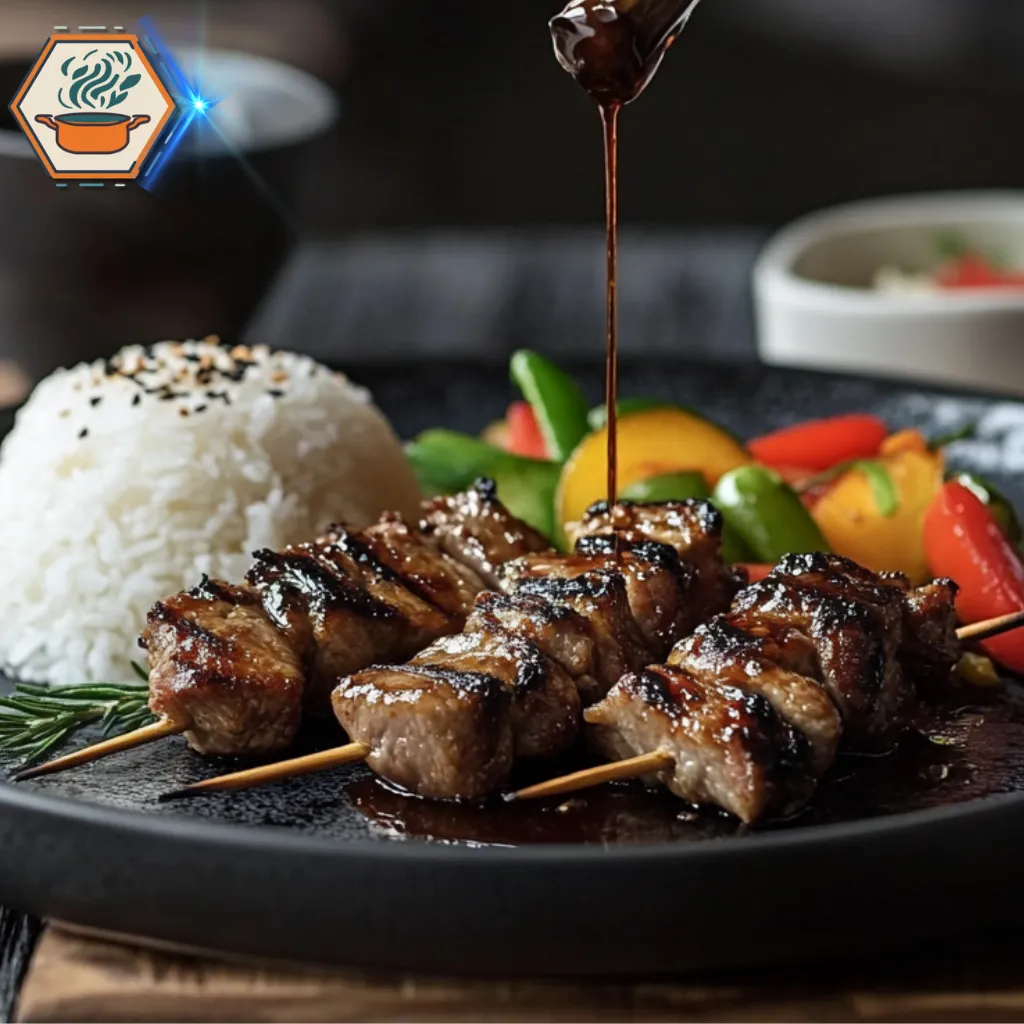
While stir fry is the most common use for this seasoning, it can also shine in other dishes:
1. Asian-Inspired Rice Bowls
Mix stir fry seasoning into cooked rice or quinoa. Add fresh vegetables, a protein of choice, and top with a fried egg for a simple yet delicious meal.
2. Asian-Style Grilled Meats
Sprinkle the seasoning over beef, pork, or shrimp before grilling. It creates a smoky and tangy crust that enhances the meat’s natural flavor.
3. Savory Pancakes
Incorporate stir fry seasoning into batter for savory pancakes. They pair perfectly with dipping sauces like soy sauce or spicy mayo.
4. Salad Dressings
Blend stir fry seasoning with sesame oil, rice vinegar, and a touch of honey to make a zesty salad dressing.
How to Store and Preserve Your Homemade Seasoning
Making your own stir fry seasoning at home can save money and ensure you’re using fresh ingredients. Proper storage is key to preserving its flavor.
Tips for Storing Stir Fry Seasoning:
- Choose an Airtight Container: Glass jars with tight seals work best.
- Keep Away from Heat and Moisture: Store in a cool, dry place to prevent clumping.
- Label and Date: Always label your container with the ingredients and the date of preparation to ensure freshness.
Shelf Life of Stir Fry Seasoning
Homemade seasoning can last up to 6 months if stored properly. After this period, its flavor might start to weaken.
Tips for Perfect Stir Fry Every Time
Cooking a perfect stir fry is an art. Here are some tips to make your dish restaurant-quality:
- Prepare Ingredients Ahead: Stir fry cooking happens quickly, so chop vegetables and measure out the seasoning in advance.
- Use High Heat: The key to a good stir fry is cooking at high temperatures to sear the ingredients while keeping them crisp.
- Don’t Overcrowd the Pan: If the wok is too full, the ingredients will steam instead of frying.
- Add Seasoning Gradually: Start with a small amount of seasoning, taste, and adjust as needed.
If you’re new to wok cooking, our guide on keeping pancakes crispy offers techniques that might surprise you and apply here!
Print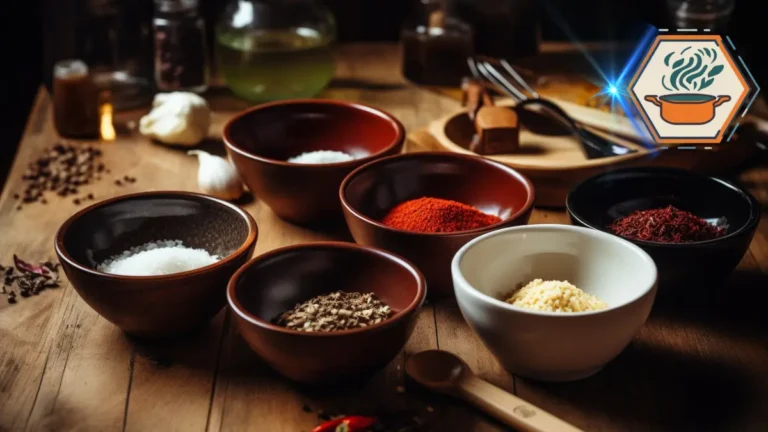
Homemade Stir Fry Seasoning
An easy and flavorful Stir Fry Seasoning made with pantry staples like soy sauce, garlic, and ginger. Perfect for stir fry dishes, marinades, and more!
- Total Time: 5 minutes
- Yield: 1/2 cup (approx. for 2 servings)
Ingredients
2 tbsp soy sauce (low sodium recommended)
1 tbsp oyster sauce
1 tsp cornstarch
1 tsp sugar (or honey/maple syrup)
1 tsp freshly grated ginger
2 garlic cloves, minced
1 tsp sesame oil
½ tsp red pepper flakes (optional)
Instructions
In a small bowl, combine all the ingredients.
Whisk well until the sugar dissolves and the cornstarch is lump-free.
Taste and adjust spice or sweetness as needed.
Use immediately or store in an airtight jar for later use.
Notes
Add a splash of rice vinegar or lime juice for a bright, tangy finish.
Store in the refrigerator for up to 1 week if using fresh garlic and ginger.
Can be used as a marinade or final sauce in stir fry cooking.
- Prep Time: 5 minutes
- Cook Time: 0 minutes
- Category: Seasoning / Sauce
- Method: No-Cook
- Cuisine: Asian
- Diet: Gluten Free

👉 Looking for a quick meal idea? Try our Zucchini Beef Stir Fry recipe for a delicious and easy dinner!
FAQS
What is Stir Fry Seasoning?
Stir Fry Seasoning is a flavorful blend of ingredients including soy sauce, garlic, ginger, sesame oil, and sweeteners like sugar or honey. It enhances the taste of vegetables and proteins, making your stir fry dishes aromatic and savory.
Can I make Stir Fry Seasoning at home?
Yes! Homemade Stir Fry Seasoning gives you full control over the flavor, salt, and spice levels. Plus, it’s healthier and free from preservatives found in store-bought alternatives.
How long does homemade Stir Fry Seasoning last?
If stored in an airtight container in a cool, dry place, Stir Fry Seasoning can last up to 6 months while retaining its flavor.
Is Stir Fry Seasoning gluten-free?
It can be! Substitute regular soy sauce with tamari or coconut aminos to make a gluten-free Stir Fry Seasoning.
What can I use Stir Fry Seasoning for besides stir fry?
Stir Fry Seasoning is super versatile. Use it as a marinade, sauce base for rice bowls, grilled meats, savory pancakes, or even as a bold salad dressing.
How do I balance flavors in my Stir Fry Seasoning?
Start with a base of soy sauce (salty), add sugar or honey (sweet), chili flakes (spicy), and vinegar or lime juice (sour). Adjust slowly for a perfect Stir Fry Seasoning
Have you tried your own stir fry seasoning? Share your experience in the comments below or explore more tasty ideas on RecipesMind!

